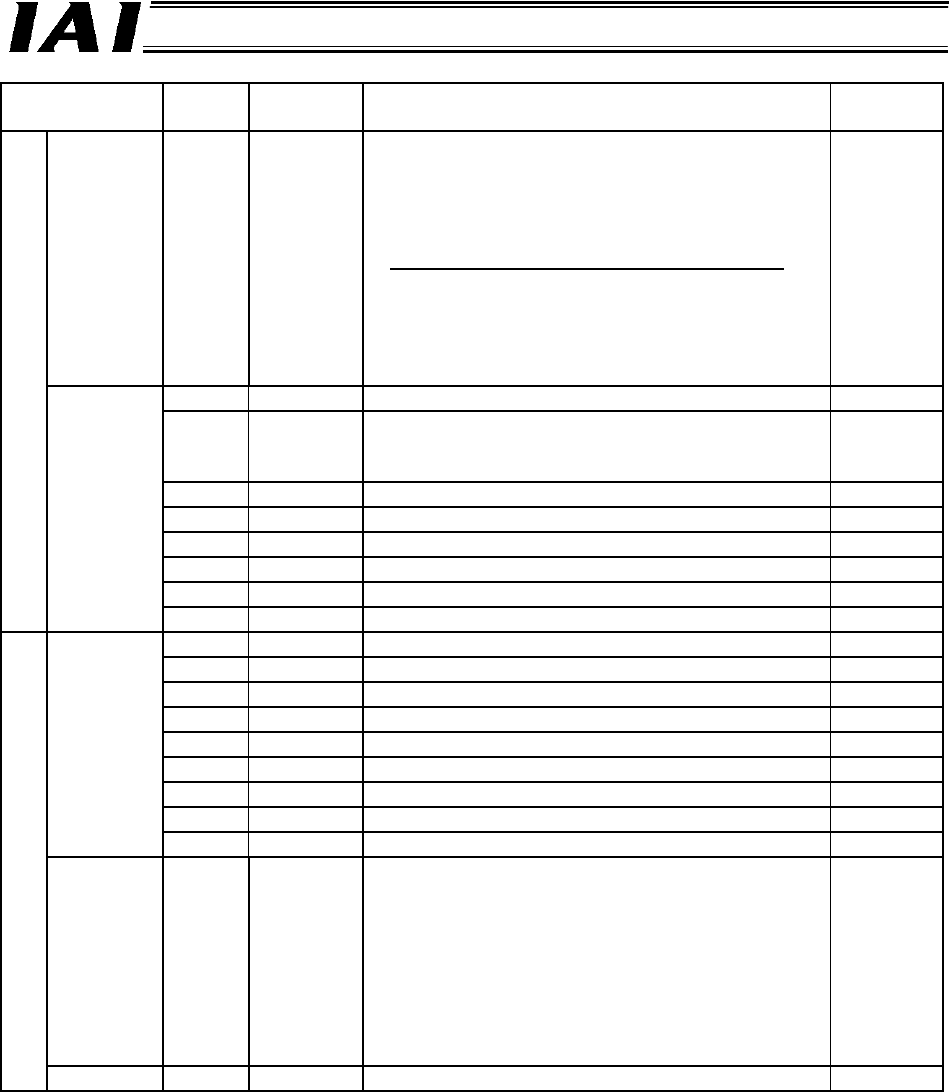Manual
Table Of Contents
- 1. Overview
- 2. Specifications and Name of Each Part
- 2.1 General Specifications
- 2.2 External Dimensions
- 2.3 Name and Function of Each Part
- [1] Gateway status indicator LEDs
- [2] SIO communication status LEDs
- [3] Mode setting switch
- [4] External port switching input
- [5] Controller communication lines
- [6] DeviceNet communication connector
- [7] Baud-rate setting switches
- [8] Node-address setting switches
- [9] DeviceNet communication status LEDs
- [10] Port switch
- [11] Teaching pendant/PC connector
- [12] Power-supply input
- 3. Installation and Noise Elimination Measures
- 4. Wiring
- 4.1 Overall Configuration
- 4.2 I/O Signals of Gateway Unit
- 4.3 Design of SIO Communication Network (SIO Communication)
- 4.3.1 Wiring
- (1) Basics
- (2) Linking PCON/ACON/SCON controllers via SIO communication
- (3) Linking ERC2-SE controllers via SIO communication
- (4) Linking ERC2-NP/PN controllers via SIO communication
- (5) Wiring the emergency stop (EMG) circuit
- [1] Example of cutting off drive signals
- [2] Example of cutting off motor drive power
- 4.3.2 Axis Number Setting
- 4.3.1 Wiring
- 4.4 How to Connect Teaching Tools When Grounding the Positive Terminal of the 24-V Power Supply
- 5. Overview of DeviceNet
- 6. Address Configuration of Gateway Unit
- 7. Communication Signal Details
- 7.1 Overview of Communication Signal Timings
- 7.2 Communication Signals and Operation Timings
- (1) Controller ready (PWR)
- (2) Emergency stop (EMGS)
- (3) Alarm (ALM)
- (4) Reset (RES)
- (5) Pause (STP)
- (6) Moving (MOVE)
- (7) Servo ON command (SON)
- (8) Home return command (HOME)
- (9) Positioning start (CSTR)
- (10) Position complete (PEND)
- (11) Command position number (PC1 to PC512)
- (12) Completed position number (PM1 to PM256)
- (13) Zone (PZONE, ZONE1, ZONE2)
- (14) Jog + command/jog- command (JOG+/JOG-)
- (15) Jog/inching switching (JISL)
- (16) Teaching mode command (MOD)
- (17) Position data read command (PWRT)
- (18) Forced brake release (BKRL)
- 7.3 Basic Operation Timings
- 7.4 Command Transmission
- 8. Network System Building Procedure
- 8.1 Procedure
- 8.2 Settings for Controller Communication
- 8.3 Setting the Gateway Unit and PLC Master
- 8.4 Assigning the Master PLC Address by Free Assignment
- 8.5 Assigning the Master PLC Address by Fixed Assignment
- 9. Example of DeviceNet Operation
- 10. Troubleshooting

56
DeviceNet Gateway
Signal type Bit
Signal
name
Description Details
Positioning
band
24-bit
data
---
Set a 24-bit integer (unit: 0.01 mm) based on
hexadecimal notation
Example) To specify +25.4 mm, set “0009ECH”
(“2540” in decimal notation).
(Notes)
Set position data within the soft stroke limits.
Specify the direction of push-motion operation
using DIR.
Even if positioning band is not set, the setting of
parameter No. 10, “Default positioning band” will
not be applied.
7.3 (4)
b15 --- Cannot be used. ---
b14 DIR
Push direction specification
(0 = Home return direction,
1 = Opposite to home return direction)
7.3 (4)
b13 PUSH Push-motion operation mode specification 7.3 (4)
b12 SON Servo on command 7.2 (7)
b11 STP Pause command 7.2 (5)
b10 HOME Home return command 7.2 (8)
b9 CSTR Start command 7.2 (9)
PLC output
Control
signal
b8 RES Reset command 7.2 (4)
b15-8 --- Cannot be used. ---
b7 EMGS Emergency stop status 7.2 (2)
b6 PSFL Missed work 7.3 (4)
b5 PWR Controller ready 7.2 (1)
b4 SV Ready (servo is on) 7.2 (7)
b3 MOVE Moving 7.2 (6)
b2 HEND Home return complete 7.2 (8)
b1 PEND Position complete 7.2 (10)
Status
signal
b0 ALM Alarm 7.2 (3)
Current
position
data
24-bit
data
---
The current position data is output as a signed 24-
bit integer (unit: 0.01 mm) based on hexadecimal
notation
Example) To specify +25.4 mm, set “0009ECH”
(“2540” in decimal notation).
(Note)
A negative value is indicated by a two’s
complement. Accordingly, the most significant bit
becomes “1.”
7.3 (4)
PLC input
--- b15-8 --- Cannot be used. ---










